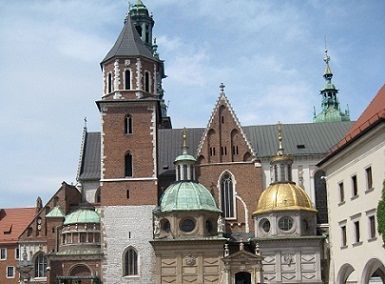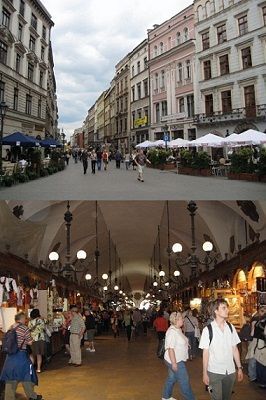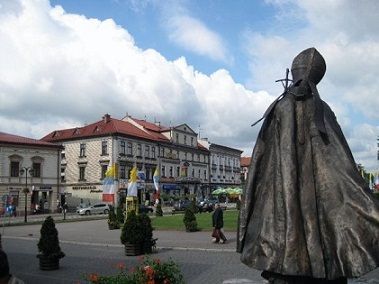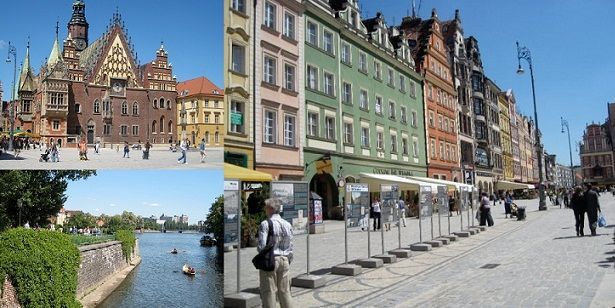Article
The Old Charm of Poland
Author(s):
The cities of Poland have an unexpected beauty to them with bright buildings, pedestrian-filled streets and history.
Poland was a tough country to picture before being there. I very much expected the cities to be very industrial, but on the other, I was picturing vast farmland. I’m a little ashamed to admit that I think I pictured Poland to be a little … backwater. Instead, I found myself falling in love with the beautiful cities and the old charm of the country.
We landed in Krakow, where we went directly to one of the big attactions: Wawel Hill, a royal castle that was home to Polish monarchs from the 11th century on. In fact, old artifacts such as weapons and plates are still being unearthed from the castle. You're able to go into the rooms of the castle. There is also something called the Dragon’s Den. The Polish like to say a dragon lives there, so as a result a variety of merchandise carts litter the area, all with dragon puppets, figures and even knives.

Krakow is an interesting city because it almost has a small town feel. People walk in the middle of the street unconcerned about the possibility of a car driving down it. There’s a large building in the Main Market Square called Sukiennice, or the Cloth Hall, which is filled with small shops that are little more than a counter and the wall behind it. And many of those shops sell jewelry with amber, which is in abundance in Krakow.

As we left Krakow we drove south to the town Wadowice, which was really only known because of one person: it was the birthplace of Pope John Paul II. It’s difficult to enter his childhood home because of the long line, but the church around the corner has a memorial to the pope and a statue of him overlooking the town square.

From Wadowice, we drove west to a very different memorial site: Auschwitz. Despite the fact that many tour groups fill the death camp, it’s impossible to forget what went on there. Having Jewish family members, this was a place I had wanted to visit probably since I learned about the Holocaust in middle school.

The camp, now a museum, has rooms filled with hair clippings, shoes and other belongings that had been taken and kept. In one of the buildings where the Jews and other prisoners were kept, the hallway is lined with photos of some of those who passed through the camp, no matter how short their stay. And yes, the tour walks you through the gas chambers. It’s not an easy place to visit for vacation, but it definitely has more of an emotional resonance than anything else you might do.

Further west we stopped by Wrocław, a beautiful city situated on the Oder River. The city, like Krakow, is quaint despite its size, with colorful buildings, unique architecture and plenty of squares for pedestrians to walk.

There’s a unique attraction in WrocÅ‚aw called the RacÅ‚awice Panorama. The panorama depicts the battle between the Polish (fighting for their independence) and Russia. Although the Polish won this battle, they ultimately lost the war. The panorama opened in 1894 in a different city before it was moved to WrocÅ‚aw. In this rotunda the walls are painted to depict the battle but in front of the wall are physical objects — such as carts and weapons — that are placed so exactly in relation to the painting that some pieces (like twigs and branches) seem to meld right into the wall.




